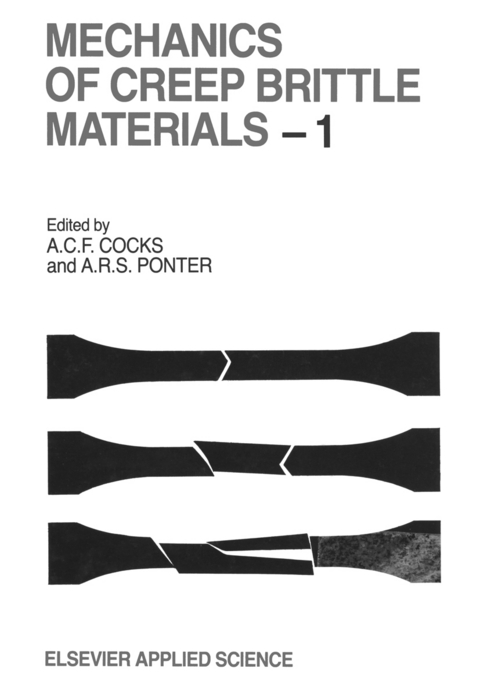
Mechanics of Creep Brittle Materials 1
Springer (Verlag)
978-94-010-6994-6 (ISBN)
1. Crack Propagation in Creeping Bodies.- The brittle-to-ductile transition in silicon.- Stress redistribution effects on creep crack growth.- Contour integrals for creep crack growth analysis.- Modelling of creep crack growth.- Modelling creep-crack growth processes in ceramic materials.- On the growth of cracks by creep in the presence of residual stresses.- 2. Deformation and Failure of Engineering Ceramics.- Creep deformation of engineering ceramics.- Statistical mapping and analysis of engineering ceramics data.- Indentation creep in zirconia ceramics between 290 K and 1073 K.- Ductile creep cracking in uranium dioxide.- Physical interpretation of creep and strain recovery of a glass ceramic near glass transition temperature.- 3. Ice Mechanisms and Mechanics.- Ice loading on offshore structures: the influence of ice strength.- Ice forces on wide structures: field measurements at Tarsuit Island.- The double torsion test applied to fine grained freshwater columnar ice, and sea ice.- Ice and steel: a comparison of creep and failure.- A micromechanics based model for the creep of ice including the effects of general microcracking.- 4. The Growth of Continuum Damage in Creeping Materials.- Continuum damage mechanics applied to multi-axial cyclic material behaviour.- Multiaxial stress rupture criteria for ferritic steels.- Segregation of impurities in a heat-affected and an intercritical zone in an operated 0.5Cr 0.5Mo 0.25V steel.- Effect of creep cavitation at sliding grain boundaries.- Creep fracture under remote shear.
| Zusatzinfo | 310 p. |
|---|---|
| Verlagsort | Dordrecht |
| Sprache | englisch |
| Maße | 170 x 244 mm |
| Themenwelt | Technik ► Maschinenbau |
| ISBN-10 | 94-010-6994-8 / 9401069948 |
| ISBN-13 | 978-94-010-6994-6 / 9789401069946 |
| Zustand | Neuware |
| Haben Sie eine Frage zum Produkt? |
aus dem Bereich


